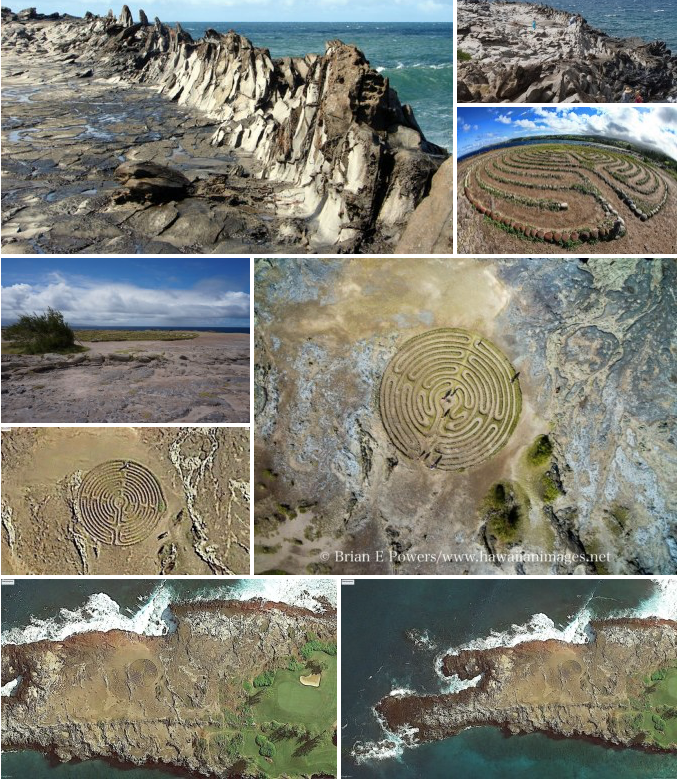Article: Dragon’s Teeth, Ancient Lava Flow Hit The Ocean
- Peter T. Young
- 18 de nov. de 2018
- 3 min de leitura

Makāluapuna
According to oral tradition, Piʻilani unified the entire island of Maui, bringing together under one rule the formerly-competing eastern (Hāna) and western (Wailuku) multi-district kingdoms of the Island. In the 1500s, Chief Piʻilani (“stairway to heaven”) ruled in peace and prosperity.
The traditional moku (district) of Kāʻanapali consisted of five major stream valleys Honokōwai, Kahana, Honokahua, Honolua and Honokōhau).
Six West Maui bays were a place Pi‘Ilani frequented. Collectively, these picturesque and productive bays are called Nā Hono A Piʻilani, The Bays of Piʻilani (aka Honoapiʻilani.)
From South to North they are: Honokōwai (bay drawing fresh water), Honokeana (cave bay), Honokahua (sites bay,) Honolua (two bays), Honokōhau (bay drawing dew) and Hononana (animated bay).
All were extensively terraced for wet taro (loʻi) in early historic and later times. Honokahua Valley has been described as having loʻi lands. Sweet potatoes were reportedly grown between the Honokohau and Kahakuloa Ahupuaʻa.
Oneloa and Honokahua Bays were once joined as one larger bay. However, during the time of Honolua eruptions (Pleistocene Period, 2.6-million to 11,700 years ago), lava formed Makāluapuna Point (Lit., spring hole (as for planting taro)), creating two bays. (Kyselka & Lanteman)
The pineapple plantation village of Honokahua was behind Makāluapuna Point. Farther up, the double lines of Norfolk pines was the plantation house of Pineapple Hill. (Kyselka & Lanteman)
Makāluapuna Point has an interesting lava formation that has earned the name, Dragon’s Teeth. It is a unique lava flow that was influenced by high waves as the ancient lava flow hit the ocean.
The wave energy at the time of the flowing lava was strong enough to curl up the edges of the lava before it cooled leaving these unique giant tooth-like structures.
In addition, there is a labyrinth. Labyrinths are tools for walking meditation and spiritual growth. They are based on patterns that date back thousands of years and have roots in many cultures and traditions.
What seems like a maze or simple ring of concentric circles is actually a pattern with a purpose. The many turns on the labyrinth’s one path reflect the journey of life, which involves changes of direction, transition, realization and attainment.
Makāluapuna Point on the Kapalua coast is the home of Maui’s largest labyrinth. Built by an anonymous builder, the white coral labyrinth was constructed as a peace project in 2005. (Schumacher, Lāhainā News)
In 1962, Maui Land & Pineapple Company, Inc. was formed when Baldwin Packers merged with Maui Pineapple Company. Maui Land & Pine created the wholly-owned subsidiary named Kapalua Land Company, Ltd., which conceived of and developed the master-planned Kapalua Resort featuring the Kapalua Bay Hotel at the shore of Honokahua ahupuaʻa.
The hotel opened in 1978, beginning the change of the former ranch and pineapple lands of Honokahua into a world-class destination resort complex.
Mauka of Makāluapuna Point, starting in 1987, to prepare for proposed ocean-side construction of the Ritz Carlton at Kapalua more than 900 ancestral native Hawaiian burials were excavated from sand dunes at Honokahua, Maui. When the extent of the burials became more widely known, native Hawaiians from around the state staged protests.
Eventually a plan was devised in September 1989 for the proper reburial of the native Hawaiian remains disinterred. Associated with that, the state paid $6-million for a perpetual preservation easement and restoration of the burial site. A 14-acre site is now a historical and cultural landmark.
In addition, as a result of this, Hawaiʻi’s burial treatment law, passed in 1990, gives unmarked burials, most of which are native Hawaiian, the same protection as modern cemeteries. The law:
• Burial Sites Program was set up within DLNR’s Historic Preservation Division
• Burial Councils were set up at Kaua’i-Ni’ihau, O’ahu, Maui-Lānaʻi, Molokaʻi and Big Island
• Procedures to deal with the inadvertent discovery of human skeletal remains were established
• If human remains are found during a construction project, construction, there stops and if the remains appear to have been buried 50 or more years, procedures were established to preserve them in place or relocate them
• Provided penalties for unauthorized alteration, excavation or destruction of unmarked burial sites
“Honokahua changed the history of Hawaiʻi. They have set precedent that we will never ever go back to this complacency and complete disregard for the iwi of our kupuna.”
“Honokahua has created the laws, Honokahua is the law, this stands as the kahili (feather standard, a sign of royalty) for all burial sites from here on to perpetuity. This is the battleground, this is the piko (navel, umbilical cord) of these new laws.” (Naeole, DLNR)
Follow Peter T Young








































Comentários